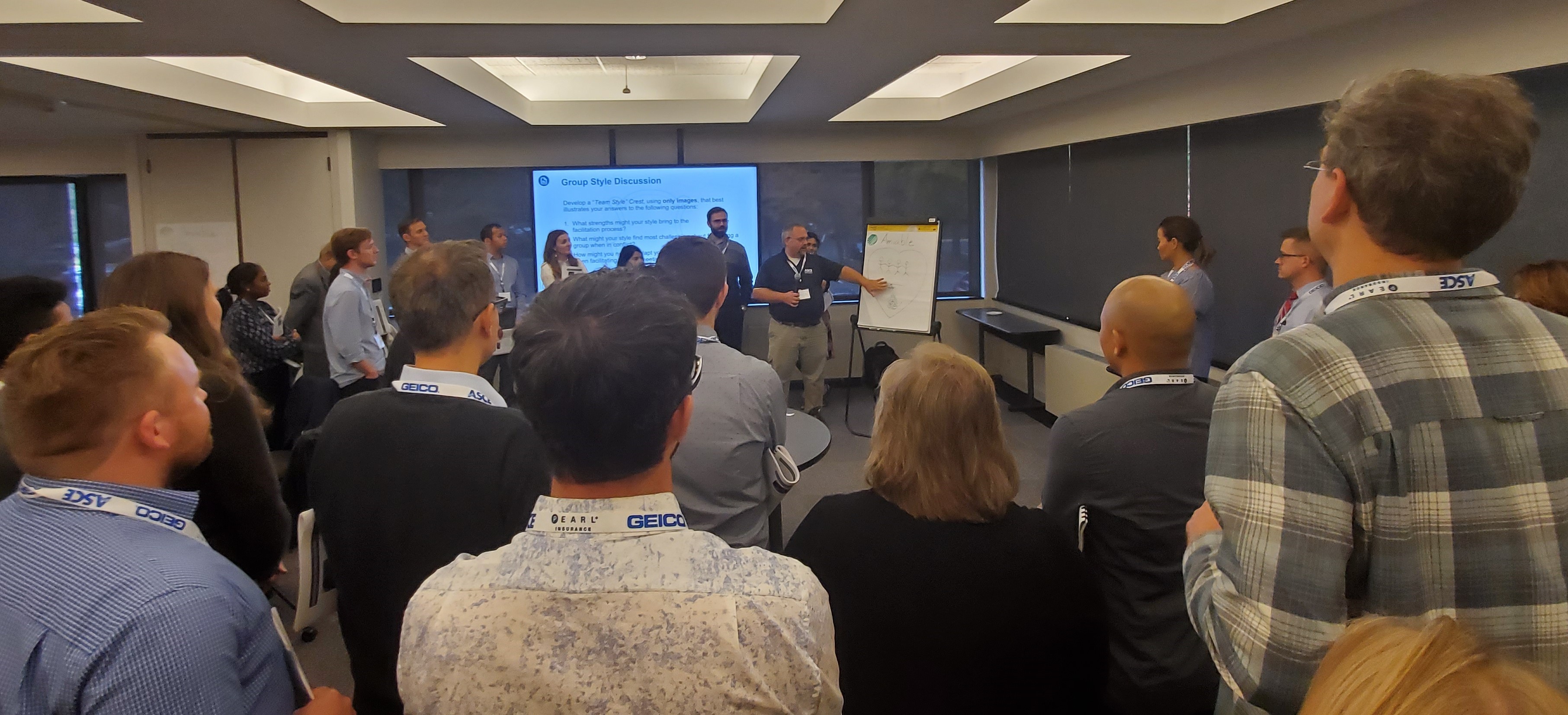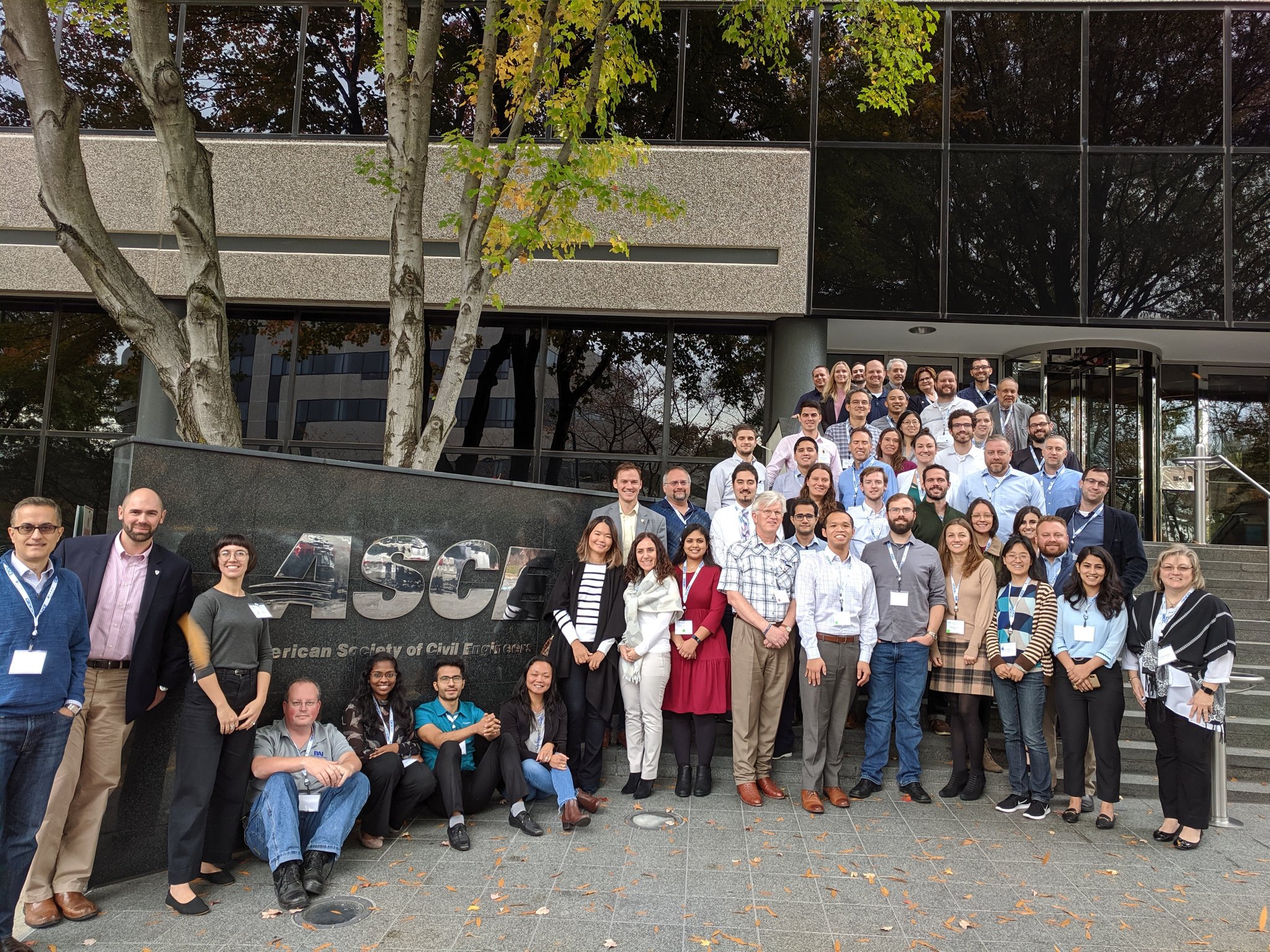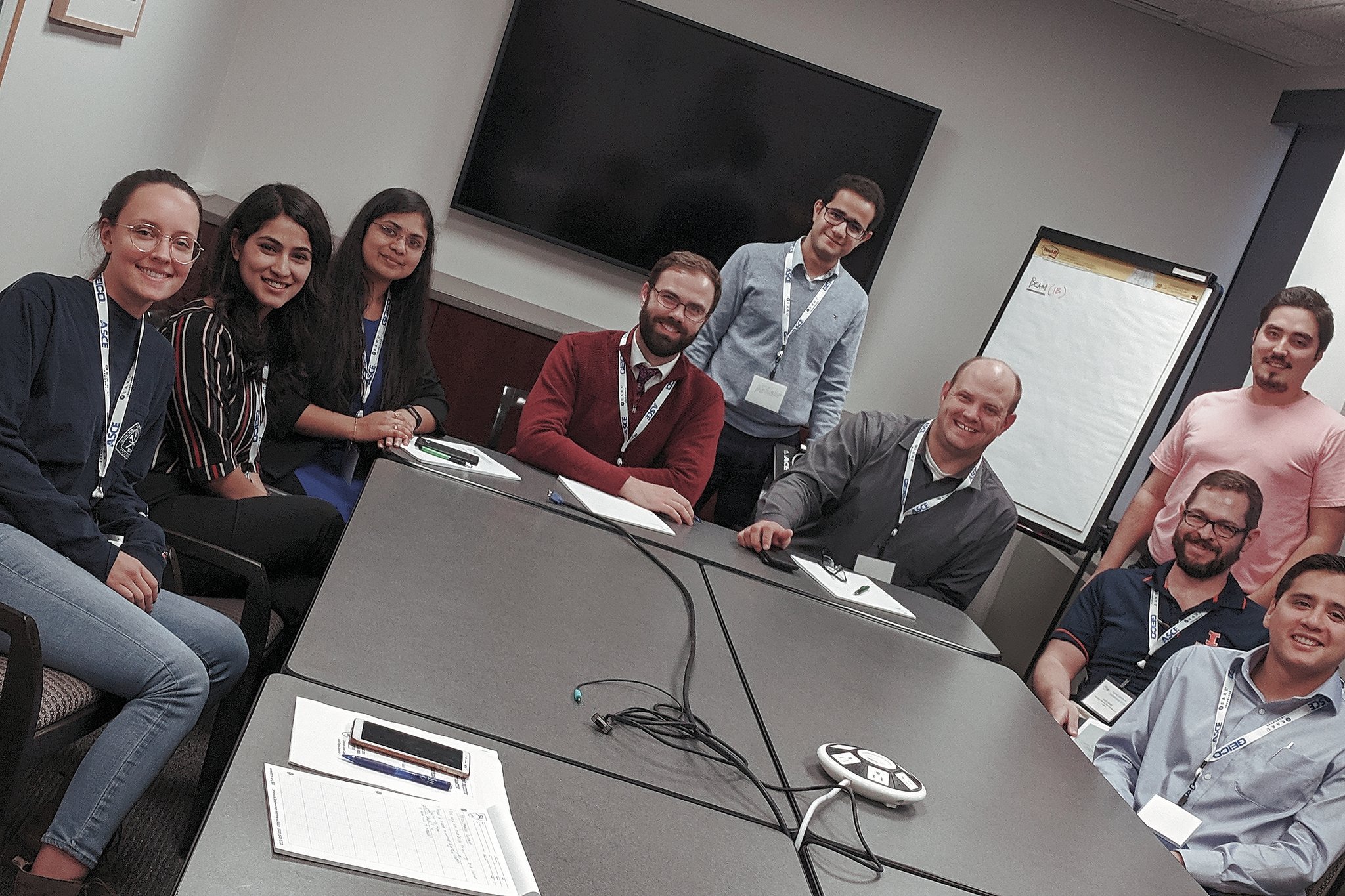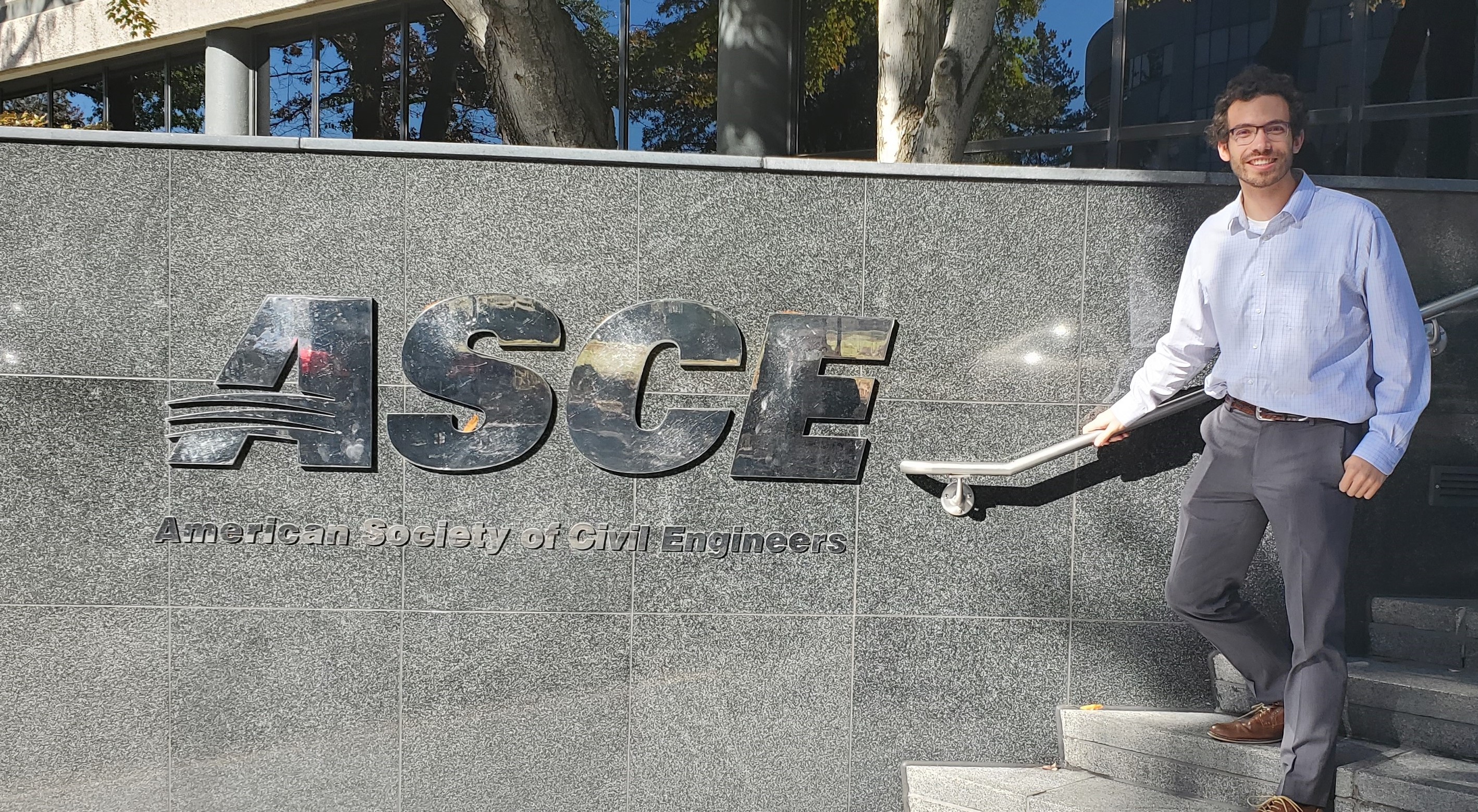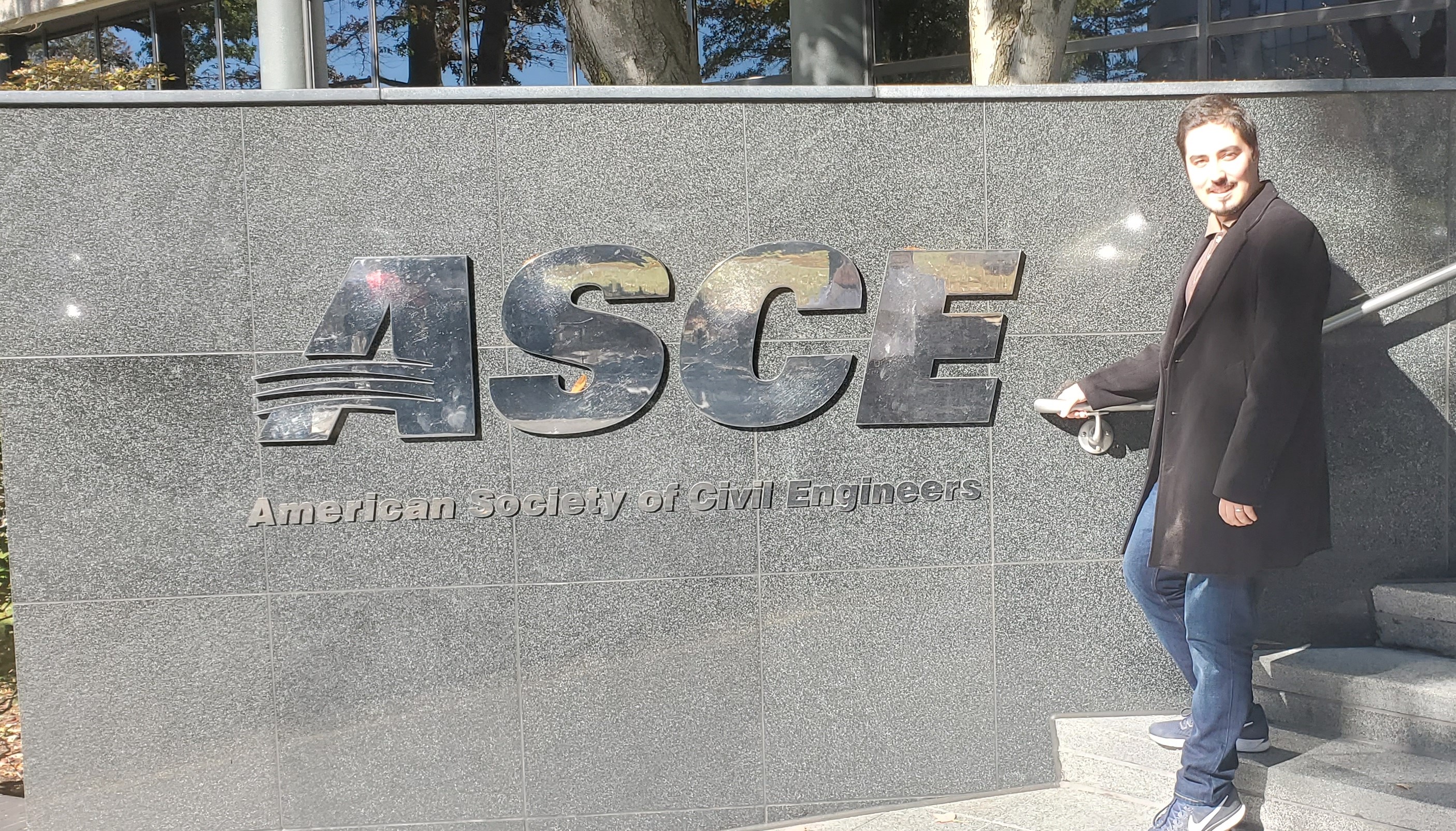February 27th, 2020
On February 27th, Dr. Stephen Morse
presented on Architectural and Structural use of glass.
If you cannot make it to our in-person presentation, you can
watch it on Youtube.
To watch the presentation, click Here.
Abstract: Glass has been used in buildings and architecture
applications for centuries, although historically it has not
been considered a material engineers use for design.
Recently, several notable building projects incorporated
significant use of glass in applications beyond windows,
e.g. a glass spiral staircase. Currently, engineers and
architects rely on project specific testing to assess the load
resistance of the glass elements used, as a national glass
design standard does not exist in the United States or
elsewhere in the world. The current methods used for
determining load resistance of windows and window
constructions will be reviewed with a brief overview of
the underlying theory and challenges facing the innovation
window construction and structural use of glass will be
discussed.
L'Anse Area Public School Outreach
On December 5th, 2019, the officers of our chapter traveled to L'Anse Area Public Schools to wrap up the 5th graders' engineering unit.
Alex demonstrated a simulation of earthquakes in the lab environment using a shake table.
Jeet talked about using glass as a structural element.
Julie talked about the Steel Bridge competition and bridges.
Arman presented on earthquakes, tectonic plates and their role in design.
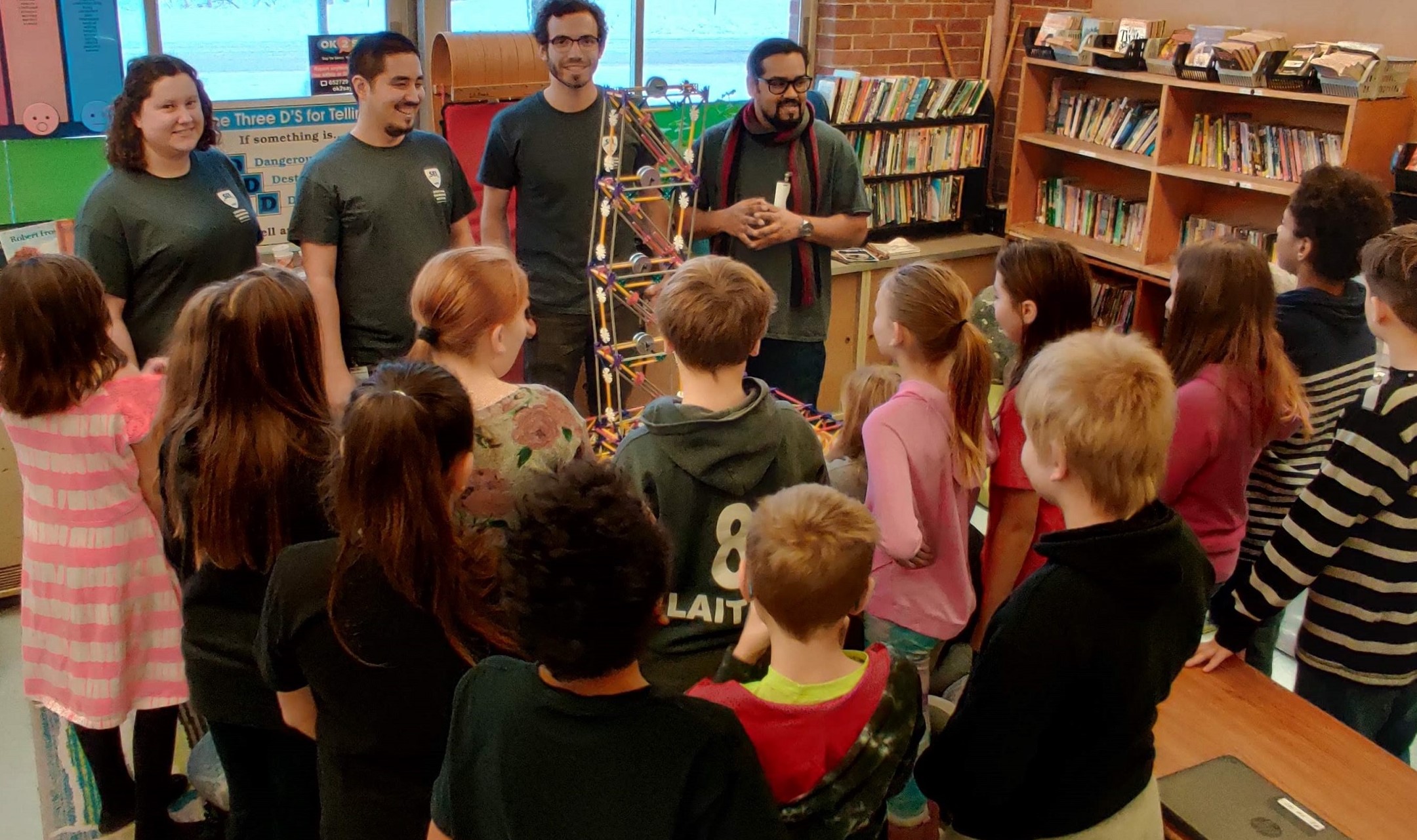
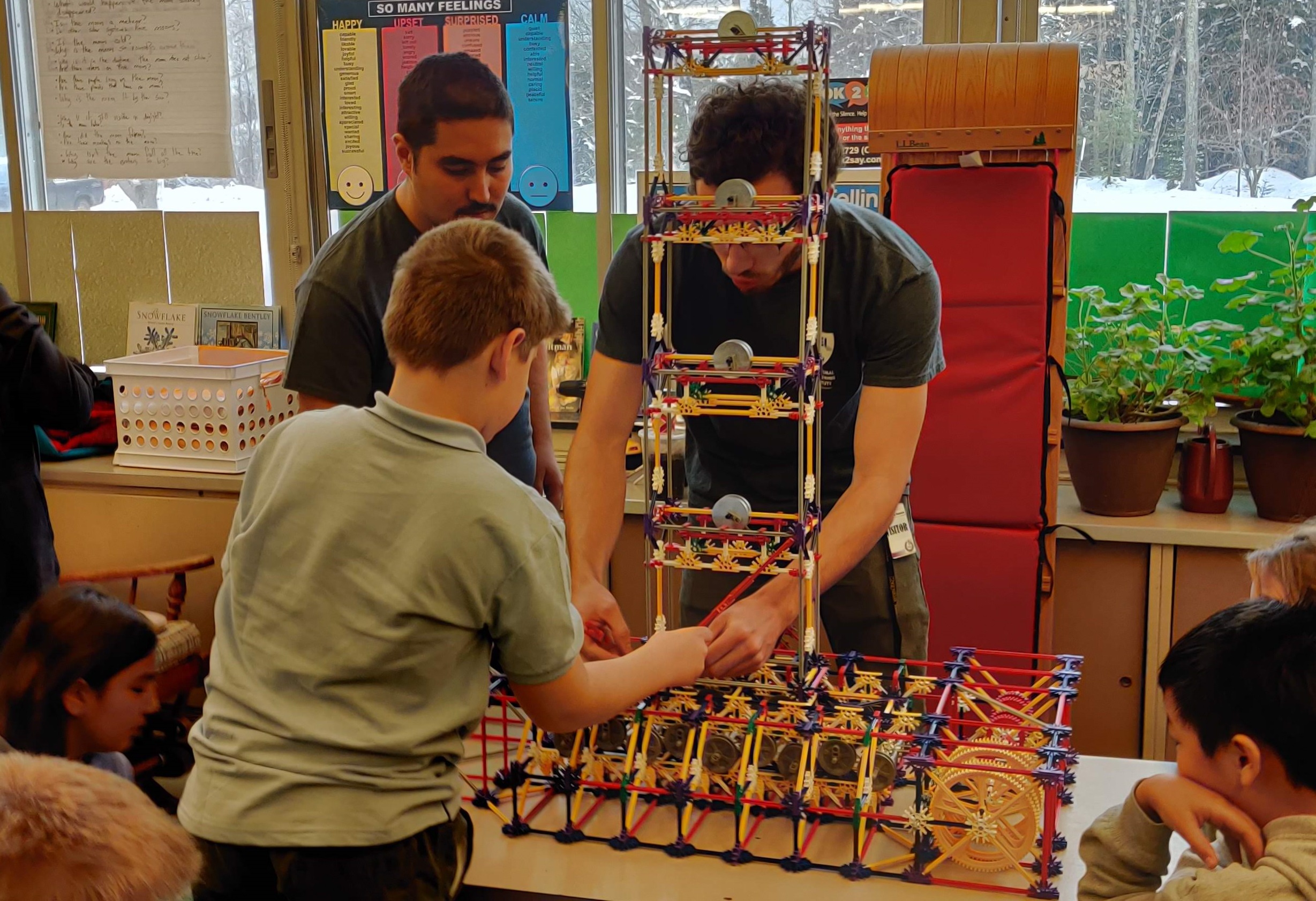
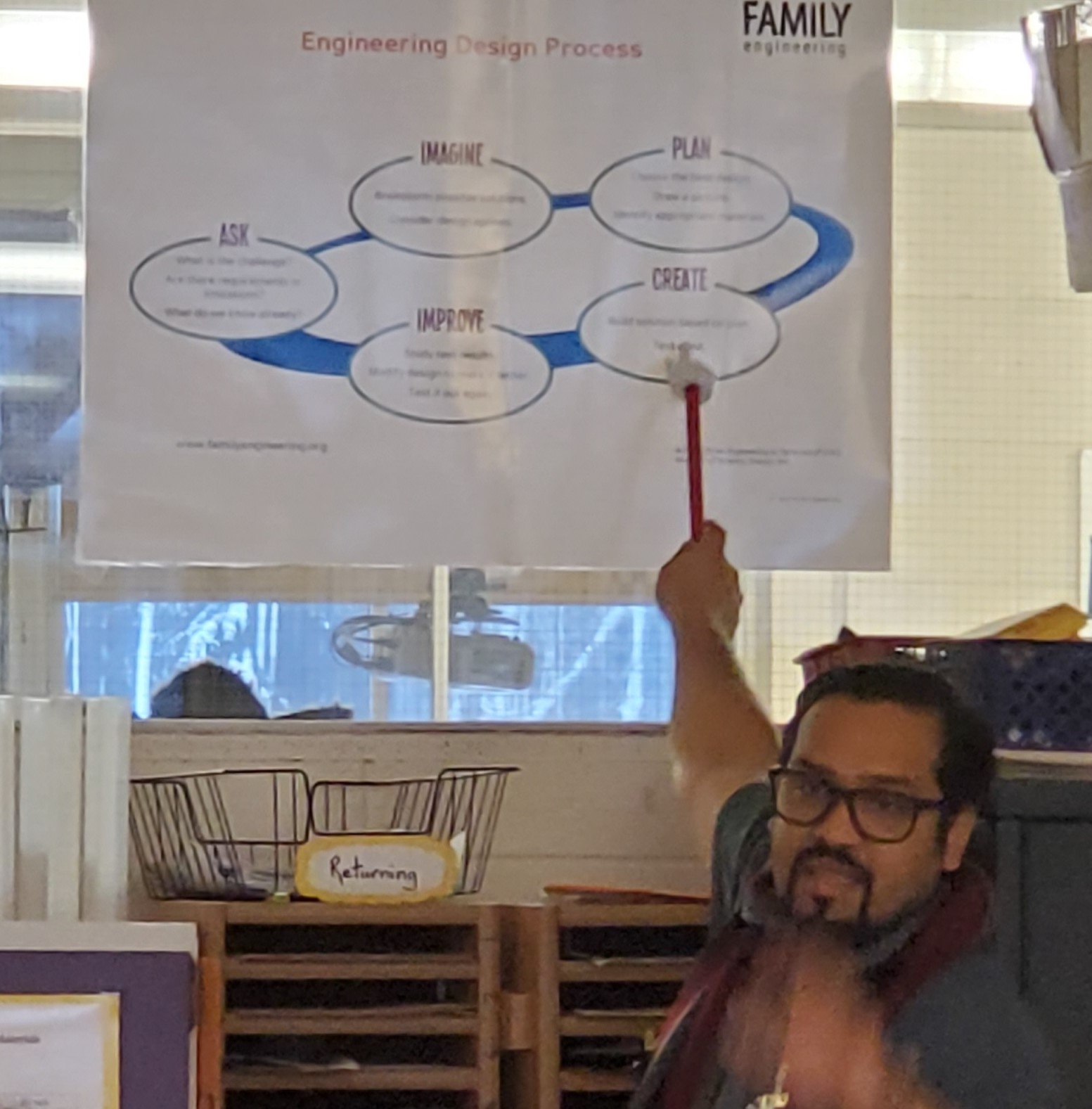
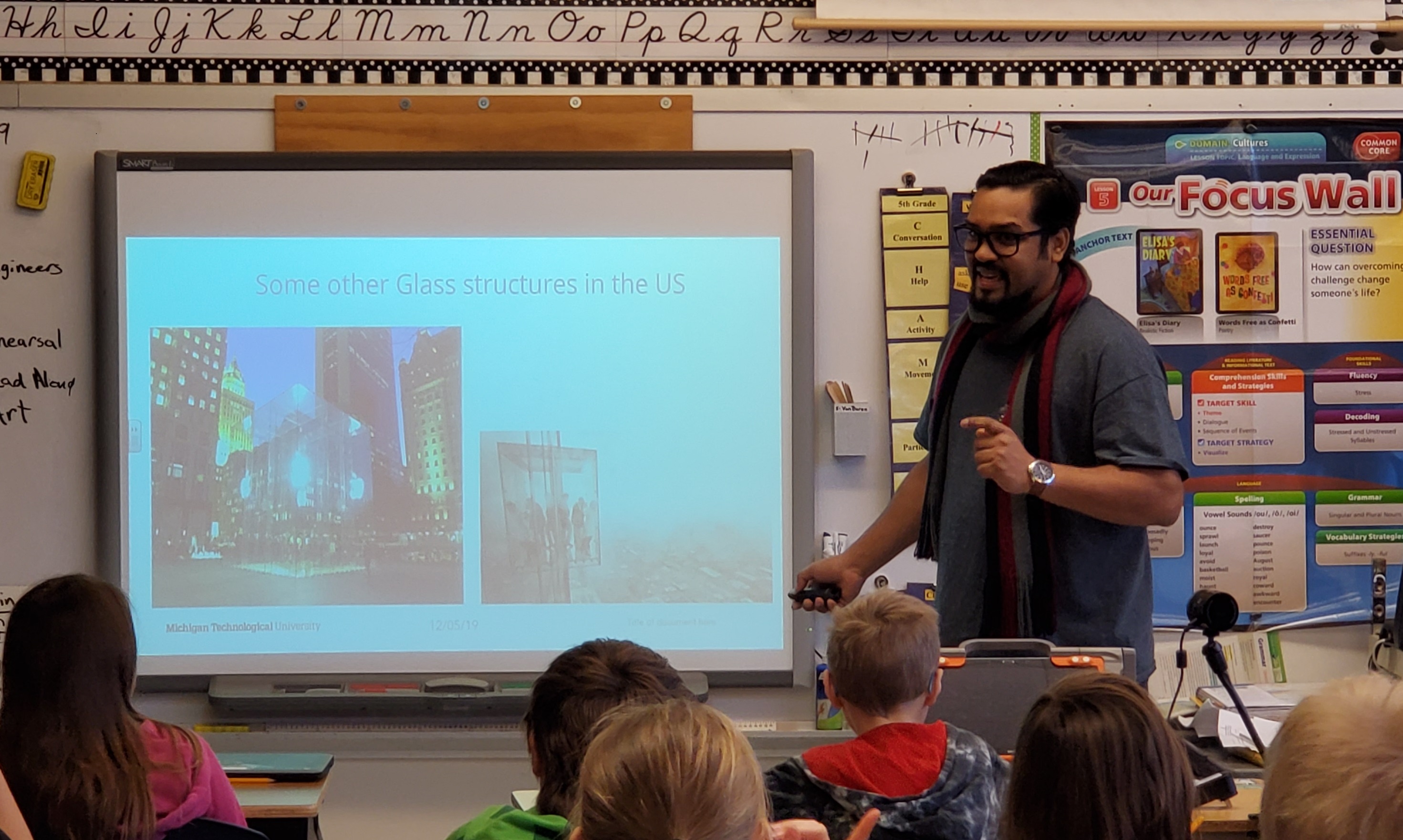
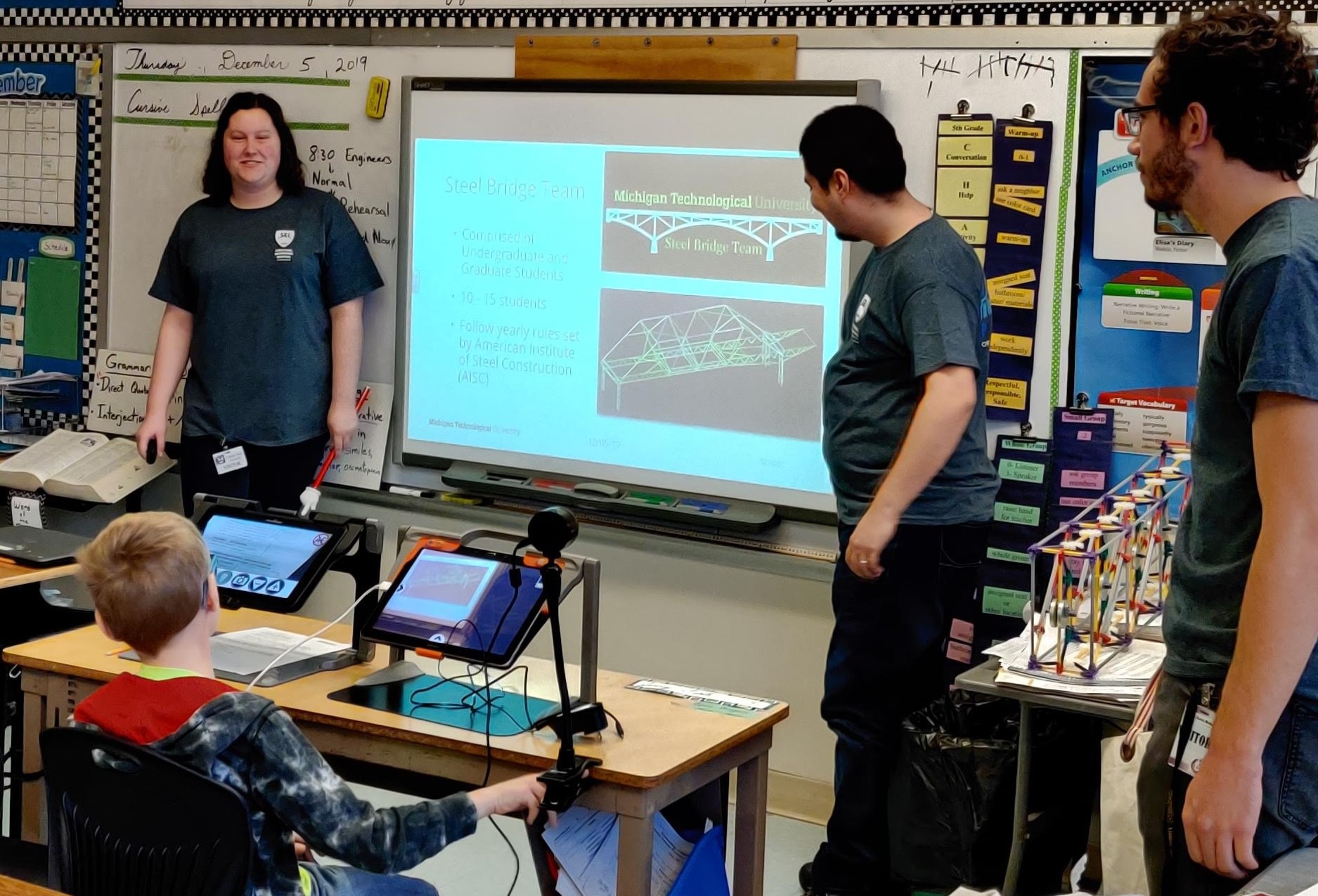
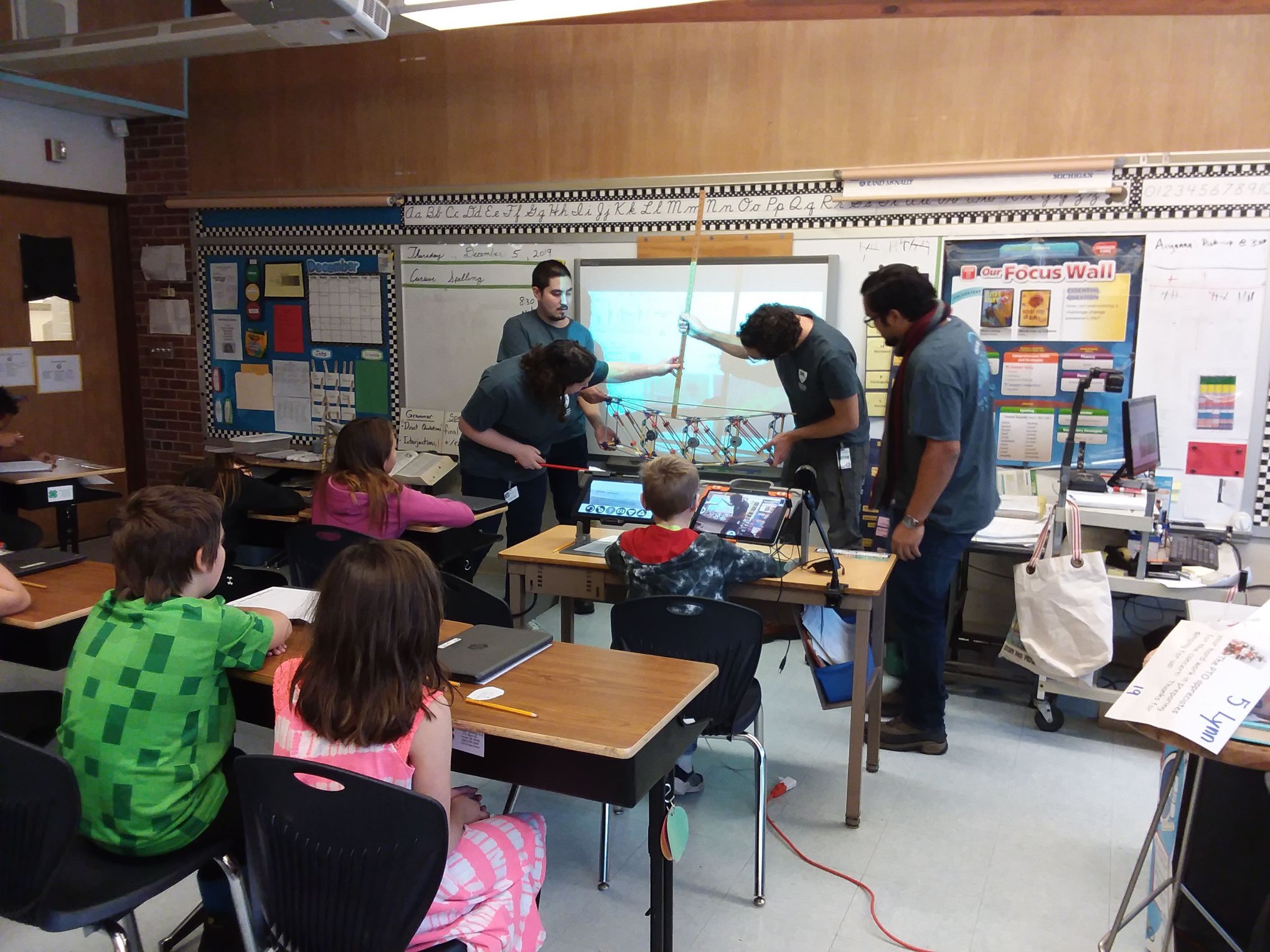
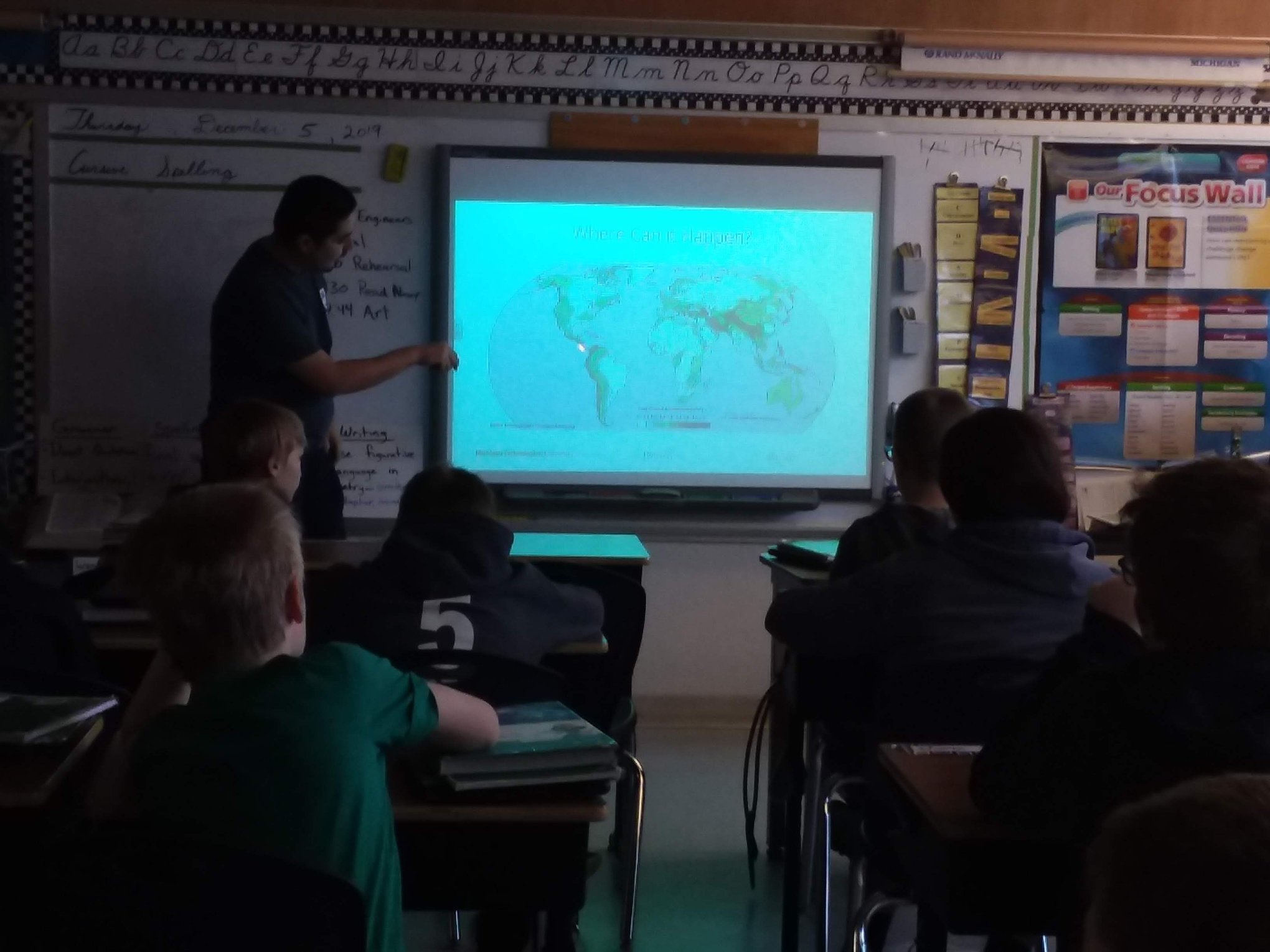
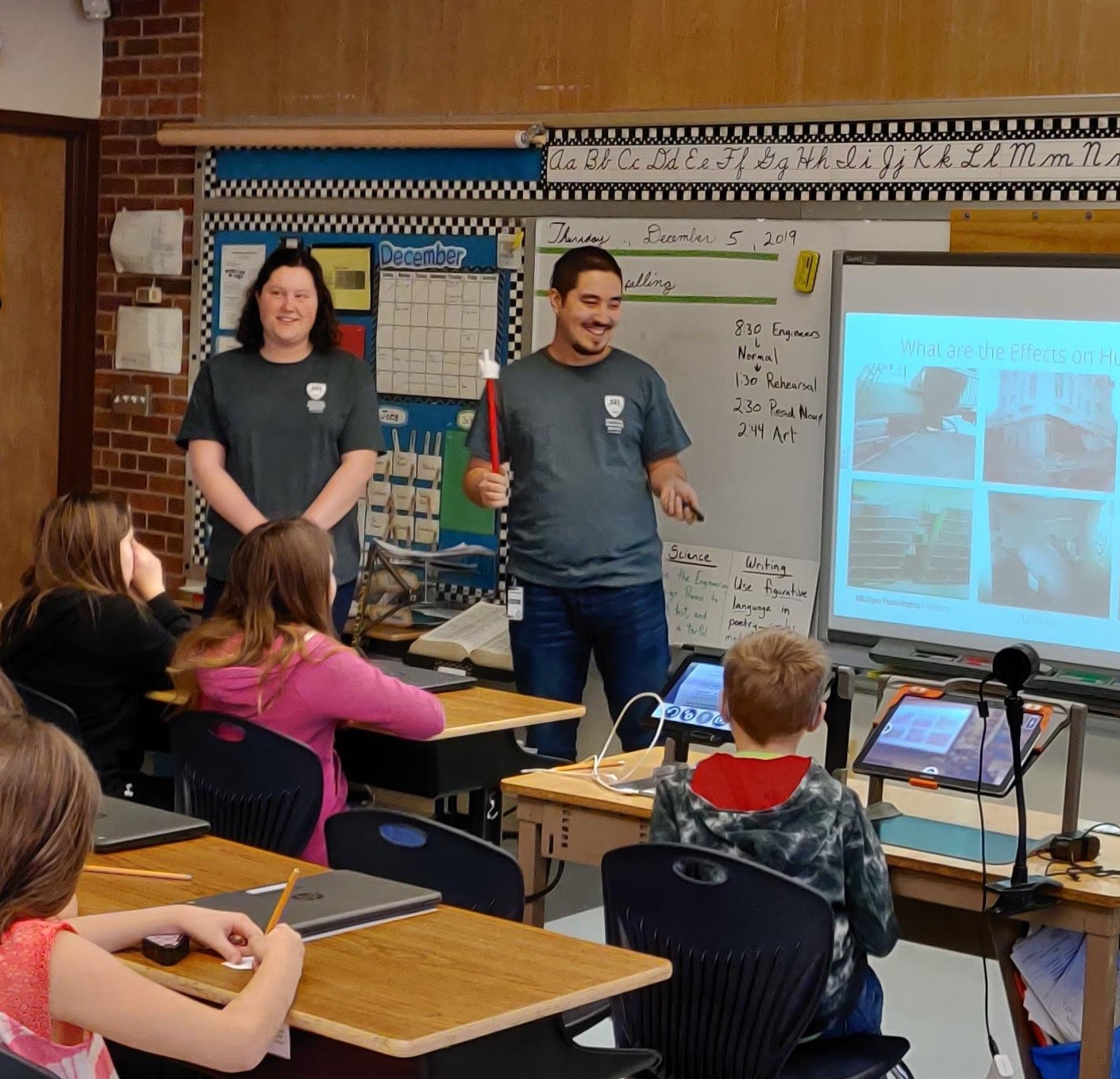
Earthquake resistant to seismically resilient, diverging from the disposable building
On Thursday November 14th, 2019, we had our advisor, Dr. Daniel Dowden
give a presentation on Earthquake resistant to seismically resilient, diverging from the disposable building.
To watch the presentation, click Here
Abstract: Modern seismic design codes focus on life-safety or collapse prevention for typical buildings,
leading to structures that are severely damaged and/or difficult to repair after a design level earthquake.
This performance objective has been in place for over half a century and is severely outdated.
In recent decades, there has been a critical shift in development of alternative seismic force resisting systems (SFRSs)
that promotes a change in paradigm from the disposable building performance objective of collapse prevention.
Some of these technologies include structures with self-centering capabilities and replaceable structural fuses.
The beneficial impacts these alterative SFRSs could have in densely urbanized areas can be realized by observation of the significant past
socioeconomic losses that have occurred worldwide due to large earthquake events in recent decades.
Accordingly, there is an increased awareness by owners and other stakeholders to consider rapid reparability and reducing downtime of structures post-seismic event.
With the recent inclusion of performance-based earthquake engineering in current seismic design codes,
this affords the opportunity and heightened motivation to design structures beyond the minimum performance objective of life safety.
This talk will present an introduction to some of these seismically resilient SFRSs in promoting seismically resilient buildings structures.
SEI Local Leadership Conference 2019
Alex Baker and Arman Tatar, representatives of the newly established SEI graduate student chapter here at Michigan Technological University,
attended the Structural Engineering Institute (SEI) Local Leaders Conference in Reston Virginia.
In this three-day conference, Alex and Arman had an opportunity to learn about the current global objectives of SEI, as well as best practices
for leadership and facilitating meetings. Alex and Arman plan to use the skills learned in the conference to better lead the new SEI graduate student chapter.








